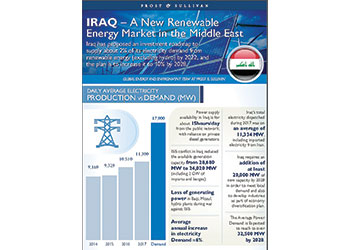
 Shaikha Al Hosani speaking during the press conference
Shaikha Al Hosani speaking during the press conference
The report is the first comprehensive air emissions geodatabase for Abu Dhabi that will also set the foundation for air quality modelling, establish a baseline for future planning and help set reduction targets
The Environment Agency - Abu Dhabi (EAD), the largest environmental regulator in the Middle East, released the results of the Abu Dhabi Air Emissions Inventory. The findings have produced over 50 high-definition sector- and pollutant- specific Air Emission Maps that identify the location and intensity of each man-made emission source in Abu Dhabi for the very first time. This information is key to quantifying the exposure of residents and natural ecosystems to air pollution in the Emirate in order to mitigate and manage harmful emissions effectively.
The Abu Dhabi Air Emissions Inventory was produced by EAD in close collaboration with over 90 local industrial entities and government bodies, including the Ministry of Climate Change and Environment, Statistics Centre − Abu Dhabi, Department of Transport, Department of Economic Development, Department of Urban Planning and Municipalities, Department of Energy, Adnoc and Abu Dhabi Ports. Contributions and sector-specific industry insights from these public and private stakeholders form the basis of this report, while also encouraging future updates to the Inventory.
The report is the first comprehensive air emissions geodatabase for Abu Dhabi that will also set the foundation for air quality modelling, establish a baseline for future planning and help set reduction targets. It covers all the major sources of man-made emissions, including electricity generation, water desalination, oil and gas, road transport, industry, shipping, aviation, agriculture, livestock and emissions found at petrol stations. The study has analysed the levels and sources of sulphur dioxide (SO2), nitrogen oxide (NOX), carbon monoxide (CO), particulate matter (PM10 and PM2.5) and non-methane volatile organic compounds (NMVOCs) emitted in the Emirate.
Results show that the oil and gas, road transport and industrial sectors are the biggest contributors to air emissions in Abu Dhabi, but with varying intensities across the Emirate – this demonstrates the complexity of air emissions and the need for a cross-sectoral management approach. Emissions of NOX, CO, PM10 and PM2.5 were highest at areas with heavy road traffic and at industrial sites such as Musaffah Industrial Area and the Khalifa Industrial Zone (KIZAD). The largest amount of SO2 and NMVOC emissions are located in areas of offshore and onshore oil and gas activity, including Al Dhafra, and near the ports.
"Air pollution is one of the main threats to public health, and as such requires coordinated cross-sector collaboration in order to mitigate the impacts of man-made emissions that impact air quality in Abu Dhabi, as well as to achieve the air quality national target - 90 per cent - by 2021," said Engr. Shaikha Al Hosani, executive director of the Environmental Quality Sector at EAD. "The results of this Air Emissions Inventory have laid solid groundwork for us to pursue targeted mitigation measures in cooperation with our public and private sector partners, which in turn will improve the environment and the lives of people living in Abu Dhabi’s rural and urban areas."
The results of the Abu Dhabi Air Emissions Inventory will support evidence-based policy and decision-making at both local and federal government levels, in order to facilitate cross-sector air quality management in Abu Dhabi - in line with UAE Vision 2021 and the Abu Dhabi Plan. It will help evaluate and assess strategies currently in place to curb man-made air emissions and help municipalities in zoning and urban planning. It will also promote cost-effective initiatives to improve efficiencies and reduce emissions by updating the environmental database for industrial emissions. The Inventory will provide facilities with both information and skills to develop their own specific emissions databases and better track their processes and emission reductions. The report will also serve as a reference tool that will enable critical knowledge exchange with local and international experts.
The Abu Dhabi Air Emissions Inventory represents a major effort in EAD’s comprehensive programme for air quality management. The Agency also operates an extensive air quality monitoring network in Abu Dhabi, which consists of 20 fixed and 2 mobile stations that feed information to the central system minute-by-minute.





































































